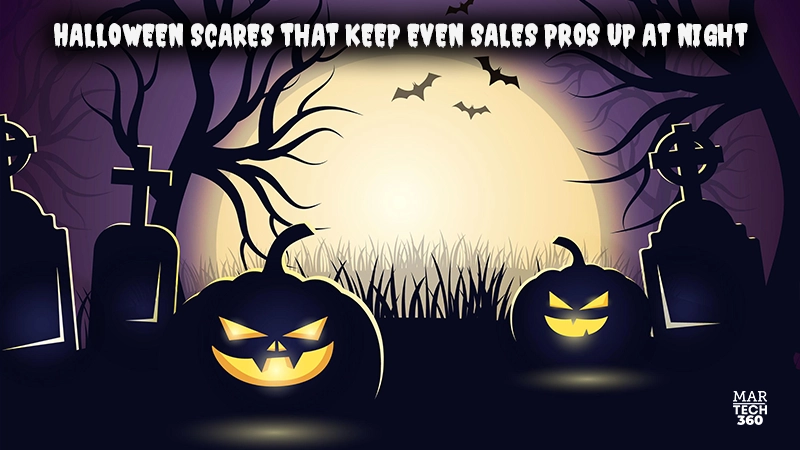As Halloween creeps closer, we all get a little spooked by things that go bump in the night. But if you are a sales professional, the real horrors don’t come from haunted houses – they come from the sales pipeline. While it’s only natural to have some anxiety about the future unknown, here are the top 5 most common fears among salespeople and tips on how to manage them, making you stronger in 2025 and beyond.
The Vanishing Lead
One minute they’re interested, and the next… ghosted. There’s nothing quite as terrifying as a promising lead suddenly disappearing without a trace. This “vanishing lead” is a common fear in sales, and for good reason. You’ve invested time and energy into building this rapport, only to be left hanging.
First, it’s important to remember that not all leads vanish because of something that the sales professional did. External factors – budget changes, shifting priorities, internal company decisions or personal reasons – can cause leads to go cold. To prevent this from happening, sales teams can rely on AI-powered CRM tools to track engagement and alert them when a lead’s activity begins to drop off. Personalization is key to re-engaging a lead, rather than generic follow-ups. Tailoring communication to remind prospects of their specific pain points, and how the solution addresses them, can sometimes bring these “ghosted” leads back to life.
The Monster Under the Pipeline
Few things haunt sales teams more than the realization that their pipeline is drying up. As the quarter progresses and targets loom, a shrinking pipeline becomes a source of dread. This isn’t just a fear of missing targets – it’s a sign that future opportunities are also in jeopardy. Salespeople know that a sparse pipeline today could mean months of slow sales down the road. For small and medium-sized businesses (SMBs), where resources are limited, the stakes are especially high.
Diversifying lead generation efforts is critical to keeping the pipeline healthy. Sales teams can benefit from mixing cold outreach, inbound marketing, networking, and referrals. AI-powered tools can play a pivotal role by automating lead generation and qualification, ensuring a steady flow of leads. By staying consistent with prospecting and diversifying channels, sales professionals can prevent the dreaded pipeline panic from setting in.
Also Read: Untangle Digital Asset and Product SKU Chaos by Mastering DAM and PIM Synergy
The Never-Ending Objection Maze
It is always hard to hear the word “no” or catchphrases like “no budget,” “bad timing,” or “I’m not the decision-maker.” This fear isn’t just about losing control of the conversation – it’s about feeling stuck in an endless cycle of roadblocks. However, objections don’t always mean the prospect is uninterested; in many cases, they’re signals that the prospect needs more information or reassurance.
Successful objection handling comes down to preparation. Sales teams should develop responses to common objections ahead of time. For example, if “no budget” is a recurring theme, offering flexible payment plans or demonstrating the return on investment (ROI) can help address concerns. AI-powered tools can assist by analyzing past interactions and suggesting the best responses to common objections, making it easier to guide prospects through the maze. Use the word “no” to fuel your sales strategy.
The Cursed Sales Target
Sales targets are enough to give even the most confident sales professionals nightmares, especially as the quarter progresses and the end of the year is nearing. Missing targets isn’t just about missing numbers – it’s a heavy burden that can make sales professionals feel like they’re letting down their team, their company, and themselves. This fear is compounded when external factors, like market shifts or unexpected client changes, impact the ability to close deals. The weight of these targets can make each day feel like a race against time.
The best way to manage this pressure is to break the target into smaller, manageable goals. Instead of focusing on the big number, sales professionals can set daily or weekly milestones. A great CRM tool helps to analyze the current pipeline and predict how close salespeople are to reaching their targets based on past performances. By staying focused on smaller goals, using technology to make real-time adjustments and learning from the experiences of other team members can break the curse and help meet targets without feeling overwhelmed.
The Phantom Competitor
The fear of all fears – losing a deal to a competitor. Sales professionals have worked hard, built relationships, and delivered strong pitches, only for a competitor to swoop in at the last minute with a lower price or flashier offer. Halloween or no Halloween, the fear of competitors is always lurking in the background ready to steal a deal at the final moment.
Remember that good competition is always part of the sales game. In fact, sales professionals can learn a lot about healthy competition as it encourages them to better understand the services or products they’re selling and continuously learn what makes them good at their jobs. Building strong, long-term relationships with prospects and continuously offering value is another tool for conquering this fear. By focusing on the unique value proposition of their product – and not just the price – sales professionals can fend off competitors and close deals successfully.
Turning Sales Fears into Wins
Sales may have its frightening moments, but with the right strategies and tools, even the scariest situations can be transformed into opportunities. No matter the fear, sales teams can overcome these fears by staying proactive, sharpening their skills, and using data-driven insights to their advantage.


Comments are closed.